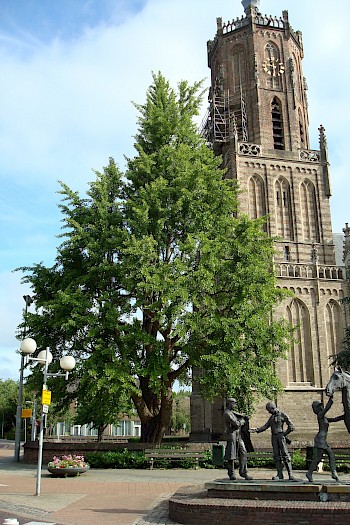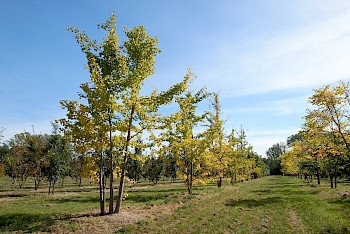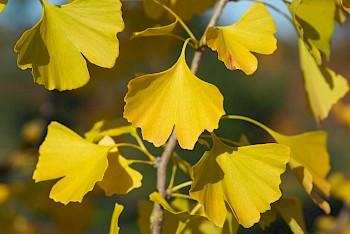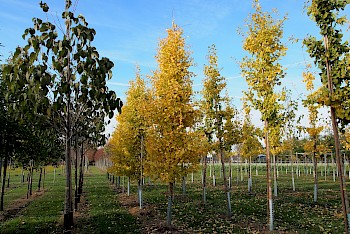20m - 25m
Leaf, Autumn colour, Shape
Yellow
Air pollution
The Japanese nut tree - Ginkgo biloba - is the first tree in Japan after het nuclear bomb on Hiroshima. This tree found the strength to grow and therefore symbolises life. This is also why for example this specific tree is planted at the maternity clinic of the hospital Twee Stedenziekenhuis in Tilburg, the Netherlands.
The Japanese nut tree is native to China, cultivated in Japan. Tree with a height of 20-25 m and variable crown shape. Usually conical. Flabellate (fan-shaped) leaves of 5-8 cm, mostly 2-lobed because of their incised top. The Ginkgo biloba is dioecious, but usually monoecious (bearing both male and female flowers) when maturing. The fruit is a plum-shaped nut-like seed of 2-3 cm, hanging from a stalk. Beautiful park tree, but certainly also a street and avenue tree for wider profiles. Endures paved surfaces well and is reasonably resistant to urban air pollution. Very wind resistant because of its deep root system. The Ginkgo biloba doesn't prefer soils that are too wet. Beautiful yellow autumn colour.



